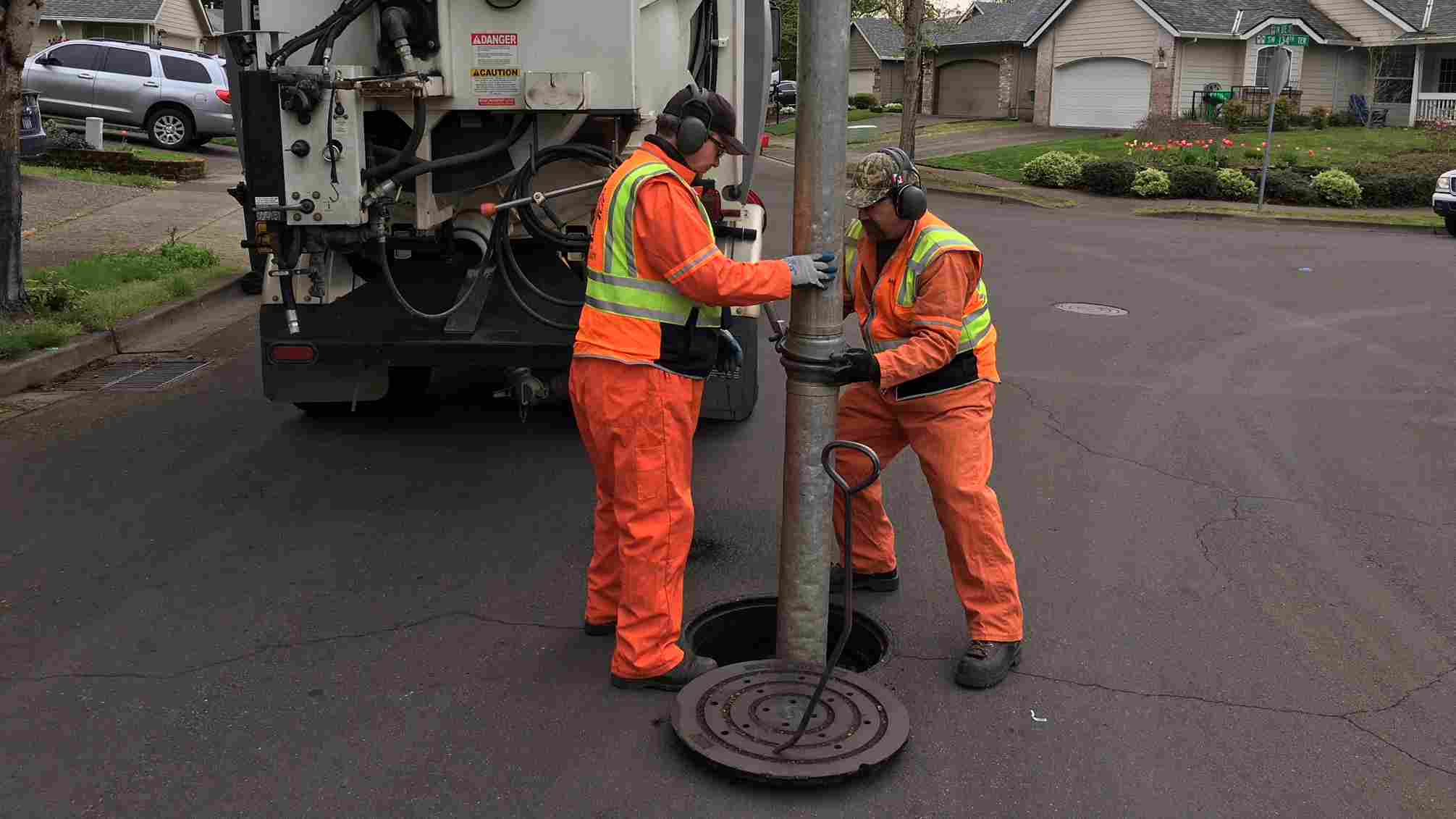Tualatin Utilities Meet the High-water Mark
By Polco on May 18, 2022

This case study is part of our Voice of the People Award series. Most VOP winners are selected based on their results on The National Community Survey (The NCS), a resident feedback assessment that focuses on the foundations that create a high quality of life.
Tualatin, Oregon, is an environmentally conscious suburb 20 minutes south of Portland. Like the rest of the state, it’s rainy. Tualatin averages about 147 days of precipitation per year, but the wet city knows how to manage its water.
Tualatin scores above the national average in resident approval of sewer services, drinking water, and stormwater management. And even though they already rank above the fold, the City’s public works department continues to improve. The quality and continual enhancements earned Tualatin two Voice of the People Awards for Excellence and Transformation in Utilities.
.png?width=6421&name=excel-util%20(1).png)
Exceptional Sanitation and Education
Tualatin partners with Clean Water Services for its sewer and stormwater services. CWS handles the treatment, EPA permitting, and logistics, while the City handles the day-to-day maintenance.
“We have a really strong partnership with Clean Water Services,” said Nic Westendorf, Deputy Public Works Director. “They are a well-run organization, so with them, we can be pretty nimble and solution-oriented when it comes to things in the sanitary system. We really have zero problems.”
The NCS results show that residents agree. Over 91% approve of the the City’s sanitary system.
Westendorf said they check on problem areas frequently to avoid issues, and they are just as diligent with their educational campaigns.
Even though residents are environmentally aware, product packaging can still be misleading. A “flushable'' wipe, for example, is about as flushable as a sheet of Reynolds Wrap. But the packaging says it’s fine to go down the toilet, so it’s not intuitive for people, Westendorf says.
The public works department ran campaigns to educate residents on what they can and can’t flush. They’ve mailed out grease kits with plastic lids that fit on standard-size cans and sent out informational packets. A large percentage of the population is Spanish-speaking, so the City makes an effort to translate marketing materials too.
“We try to peel back the curtain a little bit and let folks see the impacts and the work we have to do to keep it maintained, and get some buy-in from them,” Westendorf said.
 Tualatin stormwater operation
Tualatin stormwater operation
When it Rains, it Pours
Flooding is a constant problem all around Oregon. Tualatin faces additional challenges as a wetland with a river that runs through the area. And the damp, deciduous place has far more trees than residents. The abundance of leaves mixed with the abundance of water causes clogging. But the City knows how to handle the challenge. Around 87% of residents approve of the City’s stormwater management.
Westendorf said that, for a long time, stormwater management consisted of piping in the water and dumping it in a creek. Tualatin recently installed new technology for water treatment at the surface level. They have over 500 water quality facilities in town, which provide ample resources to pre-treat floodwaters.
The City checks a list of hot spot flood areas regularly. Residents in flood areas are also used to calls from Tualatin's dedicated water services engineer, who lets community members know when they might have to haul out the sandbags.

A potable water tank
Clean Drinking Water
Tualatin partners with the City of Portland for its drinking water services. Portland handles the treatment and management of the supply.
“The bulk of the heavy lifting is done by Portland. We manage the distribution system,” Westendorf said. “Our water source is one of the best in the state and the best in the country, so folks are generally pretty happy with the taste, odor, and feel of the water.”
According to The NCS results, 88% of residents approve of the water quality, which is well above national averages.

Portland's water system was built long ago. The dams were built around the turn of the last century. The pipes that lead into Tualatin were built in the 1970s. The system has long been paid off, so Tualatin residents benefit from lower rates for clear, clean water. But Westendorf said that the state’s largest city will soon build a new treatment facility. The new build will hike up prices a bit, but improve upon the already high-quality H2O.
Like with the storm and sewer system, Tualatin handles the upkeep. They flush their lines yearly and communicate with residents whose water services might be interrupted, like color changes due to maintenance. They post information online and on the street, and knock on people’s doors to let them know.
“We try to maintain our system to make sure everything is exceptional, and anytime there is an impact, we try to communicate that frequently and early,” Westendorf said. “With all of our utilities, we try to make sure there are no surprises.”
Tualatin is part of the Regional Water Providers Consortium, a group of 25 water providers in the metro area. They work together to improve water quality, water conservation, and emergency planning, and Westendorf said they help with this messaging coordination as well.
“They do an awesome job helping us all better serve the region,” Westendorf said.
.webp?width=2016&name=Beaver%20deceiver%20installation(1).webp) Tualatin public works department installs a beaver deceiver, which lowers flooding risk but allows the animals to build their dams
Tualatin public works department installs a beaver deceiver, which lowers flooding risk but allows the animals to build their dams
Planning for the Future
Tualatin recently finished master plans for all of its utilities around same time. Typically plans like this are staggered.
“We got to take a holistic look at all of those utilities together and how they impact each other,” Westendorf said. “Moving forward, we will have a good coordinated effort on how we plan for and coordinate growth, repair, and replacement of our systems.”
A good example of that is the upcoming Basalt Creek development on the south edge of town. Westendorf suspects the City will have an easy time installing utilities in the area and have a sense of potential impacts. If they ever need to upsize water mains or add pump stations in the future, they can do so more seamlessly. They can also clearly communicate with private development about what’s needed to build in the area and keep projects moving.
“Our current council and our community have an environmental mindset,” said Deputy City Manager Megan George. “[Developments like this], in a way, help educate the community on how our water, sewer and stormwater are so attached to our environmental landscape. They come in with an interest in the environment, and through that, get to know us and our utilities better.”
Thoughtful planning, strong partnerships, and engaging the community are how Tualatin continues to improve even though they already excel.
“We are a smaller organization, and things do go awry. But if we are just honest with folks and tell them upfront what’s going to happen and why, they are generally responsive and sometimes have great ideas on how to help us do it better,” Westendorf said. “I view our community as a strong partner in all of our utilities. It’s their utilities.”
Related Articles
Popular posts
Sign-up for Updates
You May Also Like
These Related Stories

The World's Best Tasting Tap Water

The Bumps for Local Government in Mexico

